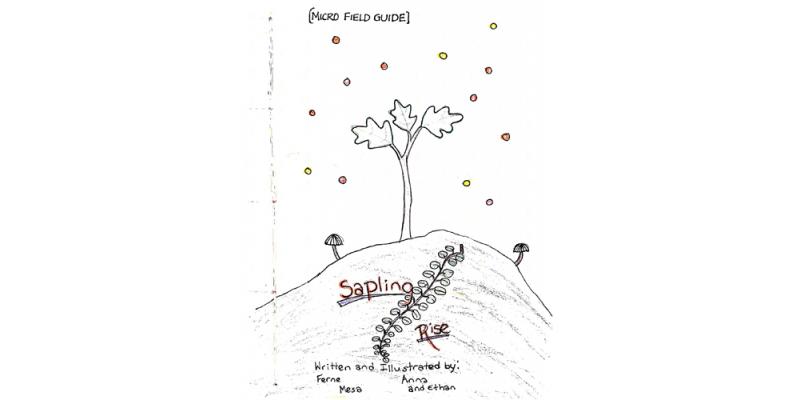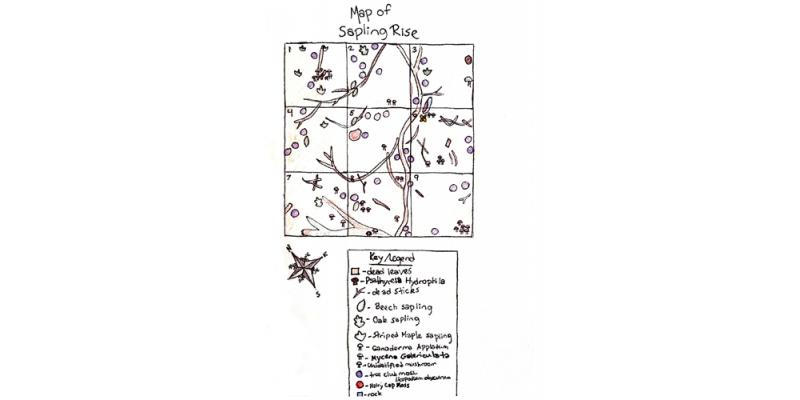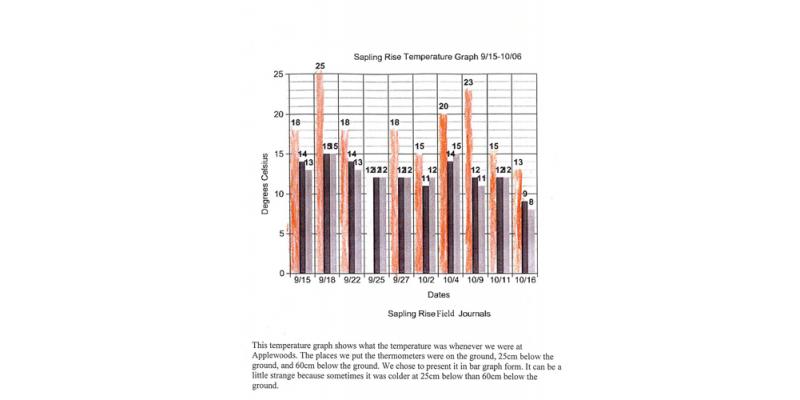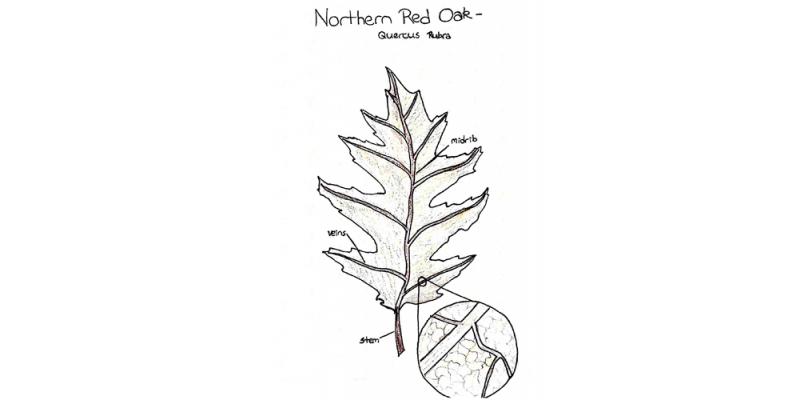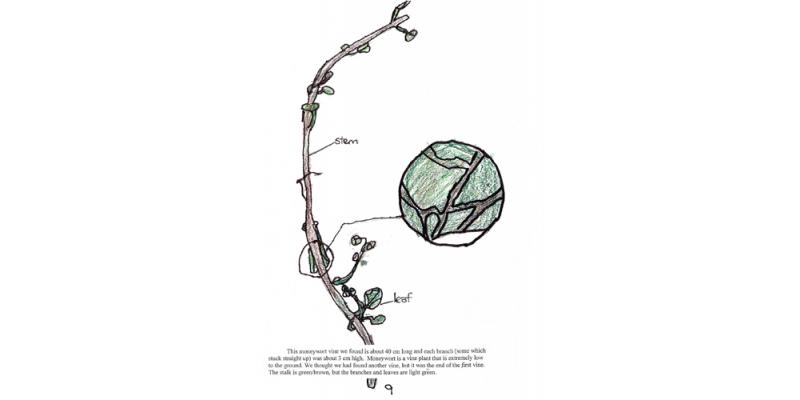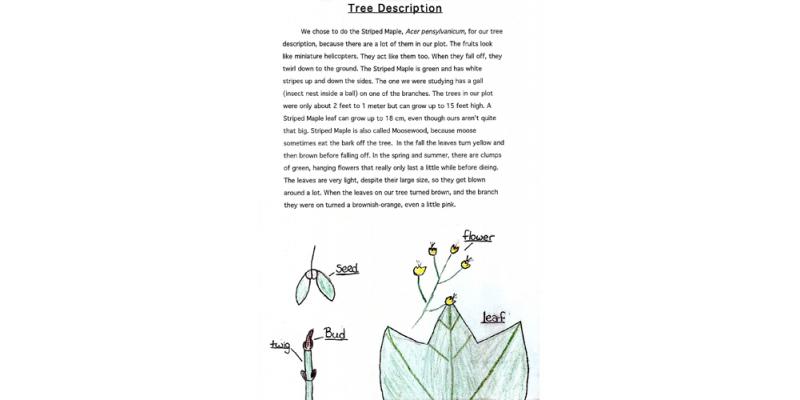Sapling Rise - A Micro-field Guide
School: Marlboro Elementary School
City/State: Marlboro, VT
Grade(s): 6
Format(s): Field guide: Natural science
Subject(s): English Language Arts, Mathematics, Science and Technology, Visual Arts
Project Overview
This micro-field guide was created by 5th and 6th graders from Marlboro Elementary School in Marlboro, Vermont. Groups of 3 or 4 students worked together to investigate their own 3 by 3 foot (approximately one square meter) research plot, over multiple visits, and then created a field guide to their plot.
They started by sub-dividing their larger plot into one-foot square plots; each student, though responsible for the entire plot, also became experts in one of smaller plots. In this example of a micro field guide, students also named their individual plots based on distinct features that they observed. They then did an inventory of all the plants and animals they observed in the entire plot and created a table in which they recorded the species, the count and other relevant information. Students also measured and graphed the air temperature of each of their 8 visits to their plot.
Additionally, students studied specific species found in their plot using microscopes and illustrated their observations.
How This Project Can Be Useful
- A unique extension of the field guide format which allows students to closely investigate one tiny plot of land, fostering connections between the students and the land. Many schools have playgrounds or small proximate wooded areas that would be well suited for this exercise. The small size is real advantage for teaching students to observe closely.
- Highlights scientific observation and data collection by older elementary students.
- A powerful combination of art and science.
- Shows detailed scientific drawings that include color and multiple perspectives. See page on Northern Red Oak and Club Moss.
- Demonstrates high caliber scientific writing by 5th and 6th graders. See their description of the Striped Maple for a good example.
- When looked at with entry #152 shows the unique features each group included in their own investigation.
- Layout is appealing, including the colorful front cover, the student-created title, the “brief foreword” and the biographical information on the contributing students.
- An example of a small group, collaborative product, which also highlights the work of individuals.
Relevant Resources
Common Core State Standards
| Standard | Long Term Learning Target |
|---|---|
| L.6.6 |
|
| 6.SP.4 |
|
| 6.SP.5 |
|
